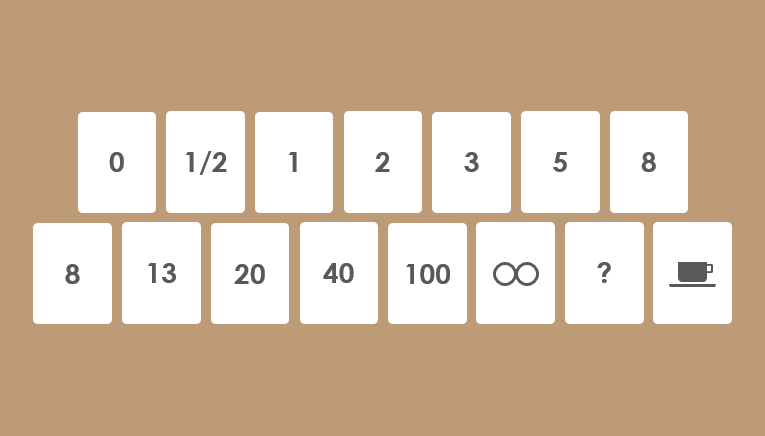Poker Sequence Order
Use our poker hands reference chart until you are 100% certain of hand rankings. Poker hands from strongest to weakest Royal Flush: Five card sequence from 10 to the Ace in the same suit (10,J,Q,K,A). Poker is played with various betting structures and rules for how much you can bet, raise or check-raise. In some formats and games, for example, you can only bet a certain fixed amount for any bet and the amount of bets per round are capped; in other formats you can bet all your money in one go at any time.
A Straight Flush poker hand consists of five cards in order, all being of the same suit, so there are way more possible combinations compared to Royal Flush. Ten times more to be exact since there are 40 possible Straight Flush hands combinations in Texas Holdem. Here are a couple of examples of possible Straight Flush hands: K♥Q♥J♥T♥9♥. The order in which Texas Hold’em is dealt is very specific and, assuming you’re playing with a table full of lucid, honest people, never changes. First, you are dealt two hole cards. Then comes the flop, turn and river cards. The flop After a round of betting for the hole cards, a card is burned. Straight Flush: It consists of five cards of the same suit in sequence. Four of a Kind (Quads): It has four cards of an equal rank of any suit. Full House or Full Boat: Full house in Poker consists of three of a kind and a pair. Flush: It consists of five cards of the same suit, no matter the order or sequence.
On the Ordering of Playing Card Suits
(or, why “CHaSeD” is bad for you)
Each individual playing card is identified by the unique combination of a value and a suit. The values are numeric in nature (if we assign 11, 12, and 13 to the Jack, Queen, and King, respectively); as such, we can order them easily, exploit their odd-even nature, use them in mathematical operations, etc. The methods underlying many effects are based on this numeric property of the values.
It’s equally useful to assign such characteristics to the suits. Many people order the suits simply by memorizing an arbitrary sequence (usually one that alternates the colours): thus we have such mnemonics as CHaSeD, SHoCkeD, DuCHeSs, CoDfiSH, and HiS DeCk.

The drawback of this approach is that it simply yields an order, and fails to assign useful numeric meanings to the individual suits. Should we need the third value in a numerical sequence, we instantly know that it is a three, but when we try to do this with suits, we introduce extraneous thinking (“Let’s see, I’m using the CHaSeD order, so the third one is a Club … Heart … Spade!”). Similarly, if we wish to make use of a suit’s value for some computational purpose, we are left with questions like “What is the value of a Heart?”


An obvious analogy here is the Latin alphabet. While most people know the sequence (ABCDEFG …), and thus can quickly determine which character follows “M”, few know the numerical values of the letters (their positions), and can instantly name the 17th letter, or know at which position “R” falls.
All of this is far from ideal. For playing cards, though, the problem is easily resolved, by exploiting the natural numerical order suggested by the standard French suits, indicated by the points or lobes in their shapes, as depicted here:
This particular ordering (which corresponds to the SHoCkeD mnemonic, though that’s a less useful way to recall it) has additional memorable significance. Spades are widely considered the #1 suit (hence the decorative Ace of Spades). The major suits (cf., Contract Bridge) are together, and precede the minor suits. The even suits are red, and the odd suits are black: black being the “odd” colour makes sense, as black isn’t really a colour (it’s the absence of colour). Further, the black symbols themselves are somewhat odd, enjoying limited recognition by non-card-players; the Heart and Diamond, on the other hand, are basic, universally recognized shapes.
Consequently, this is my personal choice — and strong recommendation — for the most effective playing card suit order. The concept dates back at least to the J. Russell Duck (aka “Rusduck”) publication of “Spades Hearts Clubs Diamonds” in Phoenix magazine (Issue #255, May 1952), pg. 1020. Once the most prevalent ordering used by European magicians, it has of late been supplanted by the much inferior CHaSeD sequence (a victory of imitation over imagination, with a consequent loss of functionality). But once you adopt and internalize it, you will often be reminded of its advantages, and immediately and forever know that the third suit is a Club.
… Doug Dyment
Poker Sequence Order
When Hold’em is played in a professional cardroom (be it online or in a brick-and-mortar casino), a dealer button acts as the theoretical point that the cards are being dealt from. This button moves one position clockwise around the table at the conclusion of every hand.
The player in the position immediately to the left of the dealer (that is to say, clockwise) posts an automatic bet called the small blind, and the player immediately to his left (or two places to the left of the dealer) posts an automatic bet known as the big blind. These are forced bets that players must make in order to get dealt into the game. All other players get to see their hands “for free.”
Players decide whether to play or fold (quit) in a clockwise position, starting with the player immediately to the left (clockwise) of the big blind. Any players who fold are no longer eligible for the pot and are skipped over in subsequent betting rounds for that specific hand.
Poker Sequence Order Worksheet
In Hold’em, your position relative to the other players is critical. When you’re in the beginning of the betting order, your cards have to be of higher quality than the cards you would normally play in later position — especially if lots of players are left in the hand — because you have no idea what evil may lurk beyond.
Poker Sequence Order Worksheets
Likewise, if you’re riding at the back of the calling order, you can afford to play looser hands (those that aren’t as high quality) and hope to catch cards to break people’s dreams. In fact, pot odds (the amount you bet relative to the amount you would win) say that sometimes you should call, even when you have a lesser hand.